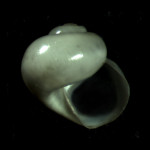Mention any carbon sequestration scheme and inevitably someone’s original idea is to dump it into the deep. All these plans share 1)an out -of-site out-of-mind attitude and 2) ignorance about processes in the deep. So pardon me if I don’t get too excited about the new scheme to save us all.
Rick and Miriam have beat me to the punch but both of been goading me to comment. The plan is to dump crop waste into the deep sea. Bail up all those ol’ corn and wheat stalks and dump them buggers in the ocean. Problem solved! Nothing down there (nothing actually lives down there) actually eats plant material.
The abstract:
For significant impact any method to remove CO2 from the atmosphere must process large amounts of carbon efficiently, be repeatable, sequester carbon for thousands of years, be practical, economical and be implemented soon. The only method that meets these criteria is removal of crop residues and burial in the deep ocean. We show here that this method is 92% efficient in sequestration of crop residue carbon while cellulosic ethanol production is only 32% and soil sequestration is about 14% efficient. Deep ocean sequestration can potentially capture 15% of the current global CO2 annual increase, returning that carbon back to deep sediments, confining the carbon for millennia, while using existing capital infrastructure and technology. Because of these clear advantages, we recommend enhanced research into permanent sequestration of crop residues in the deep ocean.
Simple but as Miriam states…
Unfortunately, their entire premise might be wrong
The plan relies on a few assumptions:
Crop residue oceanic permanent sequestration takes advantage of two characteristics of the deep ocean: (1) minimal mixing between the deep sea waters and the upper oceanic layer in contact with the atmosphere (35, 36), and (2) the relative stability of terrestrially derived organic matter in the sediments compared to marine organic matter (37-40), due to the cold, limited oxygen availability, and apparent lack of a marine mechanism for the breakdown of lignocellulose equivalent to that of the terrestrial lignin peroxidase systems.
But the authors also state that a successful strategy would include
permanence: securing the carbon sequestered from the atmosphere for thousands of years [and] no side effects that produce unacceptable environmental damage
So to address these in order
- minimal mixing between the deep and upper ocean layer: All carbon arriving to the seafloor is consumed by organisms. This carbon is turned into growth (increased in body size), maintenance (respiration), and reproduction (increases in population size). Eventually as organisms are eaten by others part of this carbon allocated for growth and reproduction will too be respired. Thus a large amount of carbon will end up in the water column as carbon dioxide. A small amount will be buried in the sediment (probably less than 2%) and potentially sequestered away. How long will the carbon dioxide rich water to return to the surface and make contact with the atmosphere? Mixing of deep ocean masses with shallow water do occur over longer time scales (Pacific, Indian, and Atlantic: 510, 250, and 275 years, respectively). “The deep waters of the entire world ocean are replaced on average every 500 years.” Thus we can say hello to that sequestered carbon in a few hundred years.
- The authors state that is it unlikely deep-sea organisms will be able to utilize terrestrial organic material. Several biogeochemical studies including one by Burbridge stating that “Calculations based on recent observations indicate that approximately one third of the organic matter presently being buried in marine sediments may be of terrestrial origin, with the majority of this terrestrial organic matter (TOM) burial occurring in muddy, deltaic sediments. These calculations further suggest that the remineralization of terrestrial organic matter in the oceans is also much less efficient than that of marine organic matter.” These statements do not suggest material from terrestrial origins is not being utilized or indicate the total amount actually being buried. Nor is it suprising that remineralization of terrestrial organic material in the oceans is much less efficient than of marine organic material. However, this does not say terrestrial material is not being processed at all. In actuallity, deep-sea organisms are amazingly well adapted at using any and all organic input. Miriam points to wood-fall communities that are colonized quickly by bivalves possessing symbiotic bacteria in thier guts that can process plant material. Free-living bacteria are also quick to make use of wood. A whole tree can be consumed in a matter of decade or less. I have several deep-sea experiments involving energetics that rely on these relationships. In another of my deep-sea projects, several burlap bags I used for an experiment in an oxygen minimum zone were partially consumed in just over six months. We do not use hemp rope because it attracts organisms. An abstract from a conference three years ago detailed worms characteristic of cold seeps utilzing decaying post in the mail room of sunken ship at depth. Simply put all organic material is processed in the food limited deep. It is the rule not an exception.
- stability of organic material [due to] cold, limited oxygen availability…One of the examples below comes from an oxygen minimum zone. However, many parts of the deep are oxygenated sufficiently. The cold temperature slows metabolic processes in the deep sea but does not shut them off.
- permenance: I guess it depends on how permanence is defined but 500 years doesn’t seem worth the effort
- unacceptable environmental damage: There is a possibility, depending on the area where sufficient enough corn or wheat stalks are deposited to make this work, the seafloor would turn anoxic or hypoxic. Because this material will be used and likely be a deep-sea buffet, increased numbers of organisms with increase activity levels to the energy availability all respiring will strip oxygen from the water.
So in conclusion I am skeptical that this plan would work. Sub-seafloor sequestration still seems to be the option with the best odds of not screwing up the deep. Can’t someone come up with a way to turn corn and wheat stalks into a tasty liquor?
Stuart E. Strand, Gregory Benford (2009). Ocean Sequestration of Crop Residue Carbon: Recycling Fossil Fuel Carbon Back to Deep Sediments. Environmental Science & Technology, 43 (4), 1000-1007.





